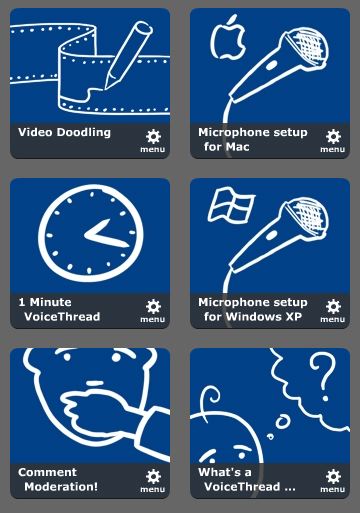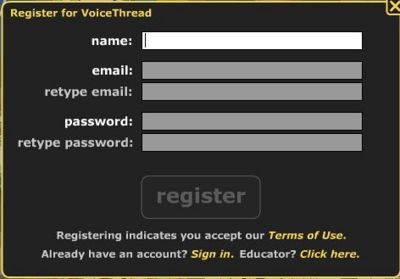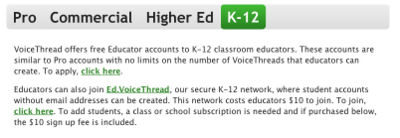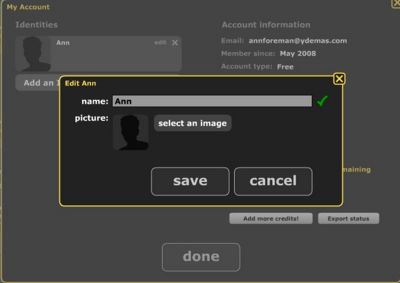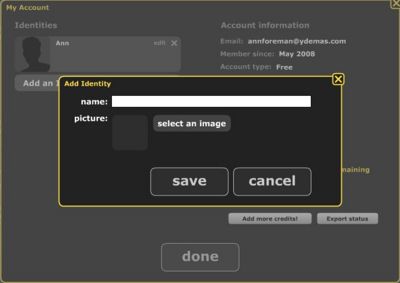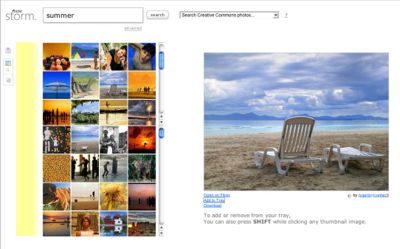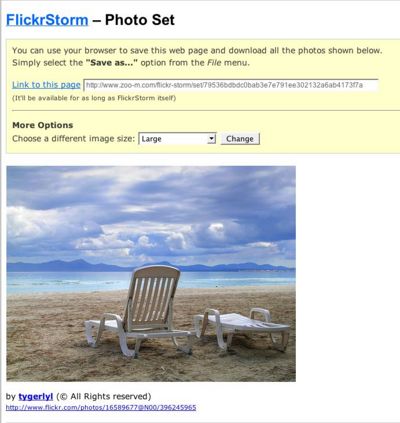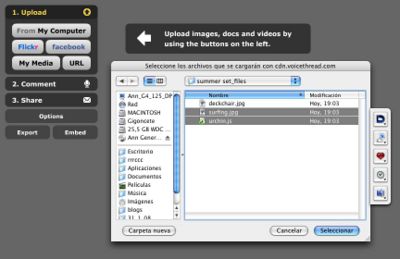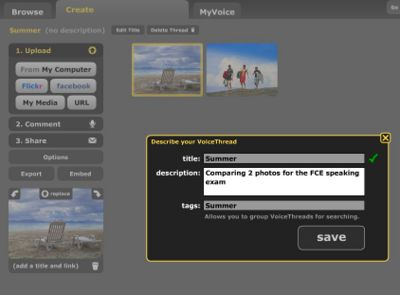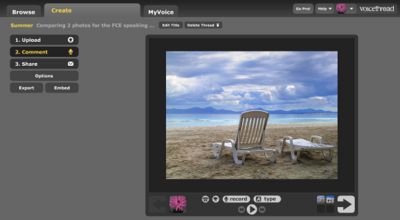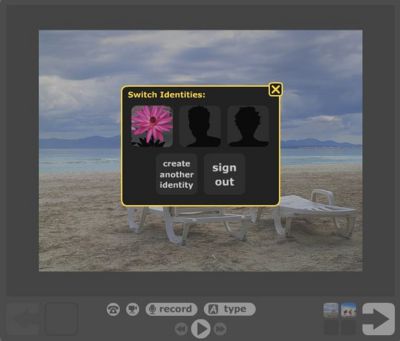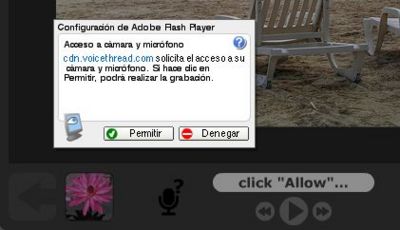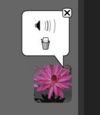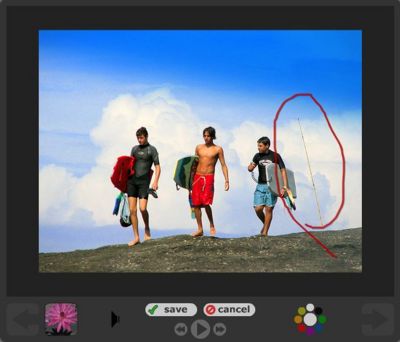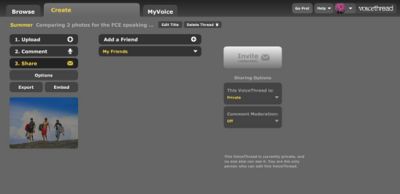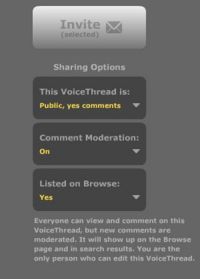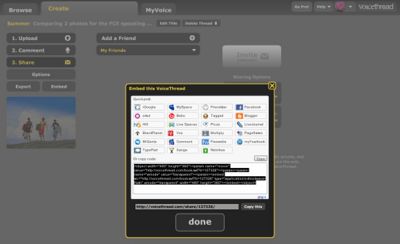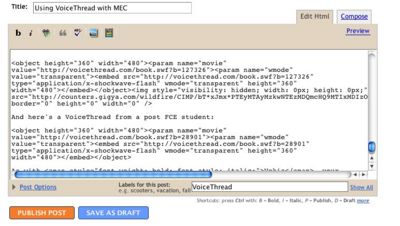Language learning: Using Voicethread for practising speaking skills
Contents
[hide]Tutorial
- Subject: Learning a second language - ESL/EFL
- Topic: Speaking practice
- Type of resource: Tutorial
- Sector: School, TVET (Technical and vocational education and training), Higher education , Adult and community education
- Level: Year 6 through to Year 12
- Complexity: Intermediate and above
- Intended Audience: Teacher, lecturer, trainer
- Learning hours: 1 to 2 hours
|
In this tutorial we will:
|
Introduction
VoiceThread is great for getting students using and developing their speaking skills in a fun and creative way.
See an example of a student created VoiceThread
You can also use it for practising the speaking part of language exams, for example, the Cambridge Suite of exams (KET to Proficiency), in the section where candidates are asked to describe/compare photographs.
If you let students to choose the photos they like best for the task, they are much more likely to be enthusiastic about what they have to say: an important learning experience that they can carry forward to the exam.
You can also use VoiceThread with your students for making presentations, storytelling, anecdotes and giving directions.
VoiceThread is very teacher-friendly. It has privacy controls, comment moderation, and a system of identities that allows all students in a class to work within one account. It also offers you a series of tutorials to help you out.
You'll need a microphone attached to the computer(s) that you're going to use.
Creating an account with VoiceThread
- Go to VoiceThread, and click on Sign in or Register.
As a teacher, you have the option to register for a special K-12 educator's account which gives you all the features of a paid Pro account. If you're interested, click on Go Pro! at the top of the page.
Configuring your account
- On your My Account page, you can add a picture of yourself.
- You can also add a new identity for each of your students. Then they can sign in using your account login but use their own name when they create a VoiceThread.
Creating a VoiceThread
1. Selecting and uploading photos
You and your students can upload photos, videos or documents from an individual computer or from Flickr (if you already have an account there containing photos).
The method I prefer is to use FlickrStorm which searches through all the photos on Flickr. (You can also use Google Image Search but the quality of the photos often isn't so good.)
- Open FlickrStorm and write the topic of the photos you want to search for in the box provided.
- Click on Advanced and select Search Creative Commons photos - which means that the photos you find will be of free copyright (as long as you are not going to use them for commercial purposes).
- Write the subject that you want to search for in the box provided. Then click on search, and after a few seconds you will get your results.
- Click on the photos you like and then Add To Tray.
- Now click on the Download & link to your tray button.
- This will take you to a new page that displays the photos you have selected. Save it using the Save as option on your web browser's menu.
- The photos will be downloaded to your computer in a folder and each will be in .jpg format. It's a good idea to change their titles to something comprehensible.
- Now you're ready to upload them to VoiceThread. Click on Upload From My Computer.
- First select the folder where your photos are, then each of the photos and finally, click on Select.
- Give your VoiceThread a description.
2. Recording a comment
- Click on Comment
- If you have created separate identities for your students, you and them can switch between them when recording a comment by clicking on the icon below the photo.
- Click on record and an Adobe Flash Player dialogue box will appear. Click on Allow.
- When you click on Stop, your recording is automatically replayed to you so you can decide whether to Save or Cancel it.
- To continue recording your comment on the same photo, just click on record again.
- If at any time you decide you don't like what you've said, you can delete the entire comment by clicking on the bin icon.
- Another interesting feature of VoiceThread, that's particularly useful for presentations, is the doodling tool. Click on the series of coloured circles that are visible when you are recording and you can signal what you're focussing on.
3. Sharing your VoiceThread
- You have complete control over who can see and comment on your VoiceThread. You can make it public or private and decide to allow all comments or to moderate them.
- To include your VoiceThread on a blog, copy the code that's displayed when you click on the Embed button.
- Paste to code into your blog posting (remember to click first on the Edit Html tag).
Suggestions for using VoiceThread for an international collaborative project
This idea came from Mary Hillis. Her suggestion is to tag photographs and blog posts about food and recipes with the tag "globalcookbook".
She has started by tagging photos "globalcookbook" on Flickr.
The same could be done very effectively with VoiceThread:
- Students take or search for photos related to food or recipes and then create a VoiceThread and record themselves talking about them
- They then create a post on their class blog and tag it "globalcookbook".
- Thus when anyone does a search using Google's blog search or del.icio.us, they will be able to find contributions from all over the world, comment on them and start an international dialogue going.
Conclusions and Summary
